B17G 44-6630
Diving in Viz, Croatia was no accident, I heard, whilst diving the Baron Gautsch (out of Pula in 2015), that there was an Island down the coast which had several wrecks, some of them WWII Aircraft, and I could not have let that go without investigation. I was also directed to an I-Pad app written on the wrecks of Croatia by a local diver Danijel Frka, it turned out to be far too tempting, with half a dozen of the wrecks around Viz featured, I couldn’t resist, especially as one of those wrecks was a B17 Flying Fortress that had only just been discovered and was, if Danijel’s illustration was to be believed, almost pristine. I’d recently dived a Messerschmitt BF109G off Crete, and my profound sense of physical connection to history was clearly not confined to shipwrecks, I had the same feeling touching the downed Messerchsmitt that I had with every shipwreck I have dived
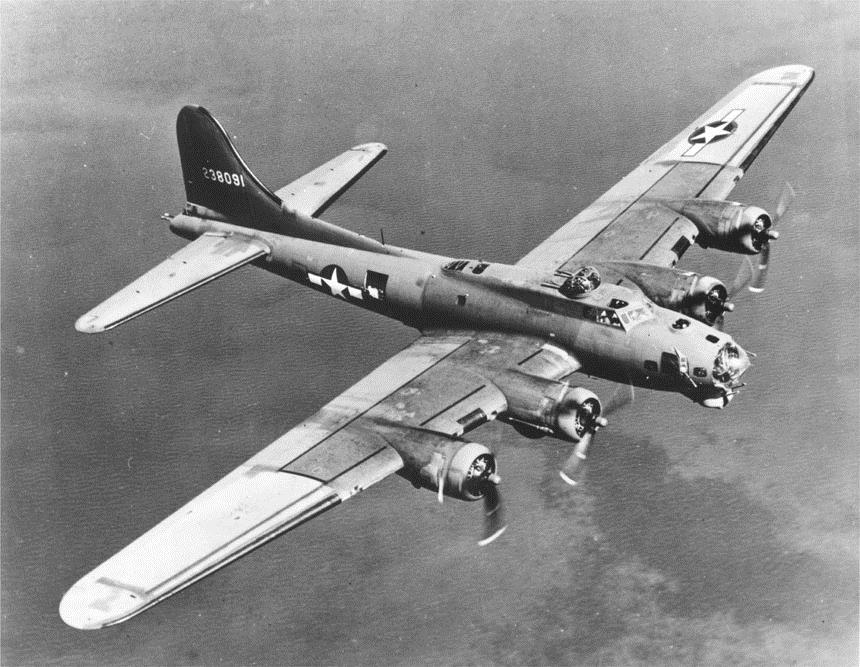
The B17 is one of those Aircraft, like the Spitfire, or the Lancaster, that truly deserve to be called “Iconic”, designed by the American company Boeing, it was the largest heavy bomber of the European Theater in WWII. The B17 prototype design was completed in the 1930’s and eventually introduced to the United States Army Air Corps (USAAC) as Model 299 in 1938. The B17 was capable of high altitude, 3000m for up to 10 hours with a bomb load of 2200Kg, and it was fast, flying at 400Kmh with a range of around 3200Km…….It earned the nickname “Flying Fortress” from a reporter’s piece (Richard Williams) in the Seattle Times, when described as “…..a 15-Ton flying fortress” (Freeman, R.A: “B-17 Fortress at war” P8. Doubleday, New York, 1974). Clearly the armaments of the prototype, five 30 calibre (7.62mm) machine guns, one in a nose turret, one behind the cockpit, one either side of the fuselage set in metal & Plexi-glass “Blisters” and a final gun under the body, had impressed Williams at the Boeing press review the day before its inaugural flight, 28th July of 1935 at the USAAC evaluation preliminaries
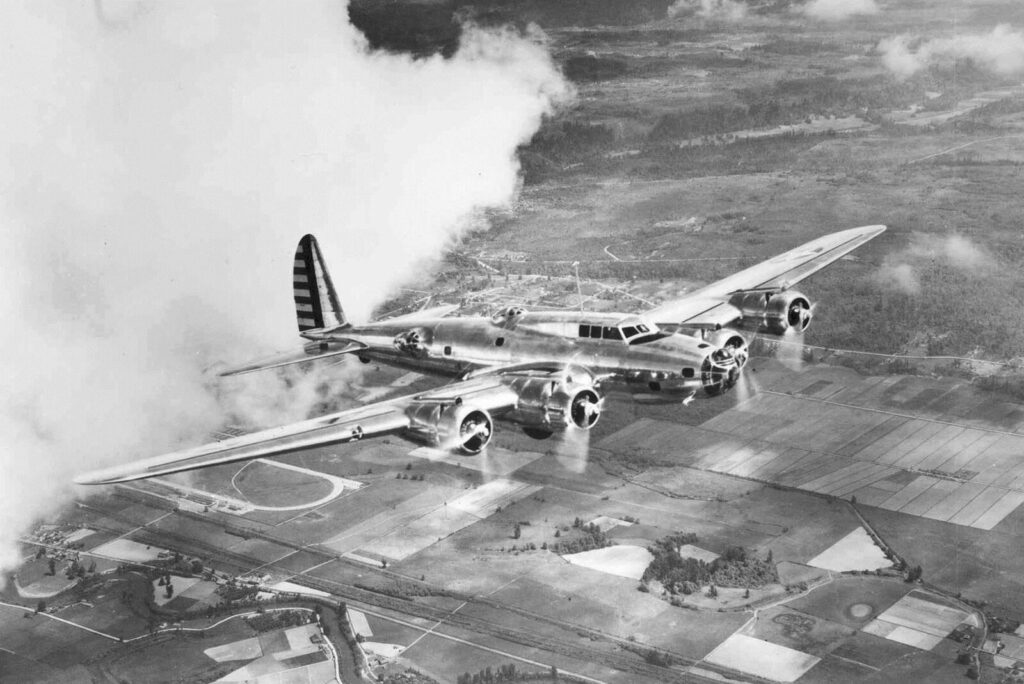
The B17 finally went into service, with what had become the United States Army Air Force or “USAAF”, after several improvements, including a change of engines from the original Pratt & Whitney R-1690 to Wright R-1820-39’s and, in 1937, the B17-B variants were fitted with GE Superchargers allowing the B17 to reach a further 8000m of altitude taking her capability to 38000m. Full scale production of the Boeing B17 B variants commenced in 1937 and Boeing would eventually reach the highest ever output of a large aircraft, averaging 14-15 B17’s per day, although it isn’t clear if that was from a single production line as B17’s were produced by Boeing, Lockheed and Douglas under contract to the USAAF
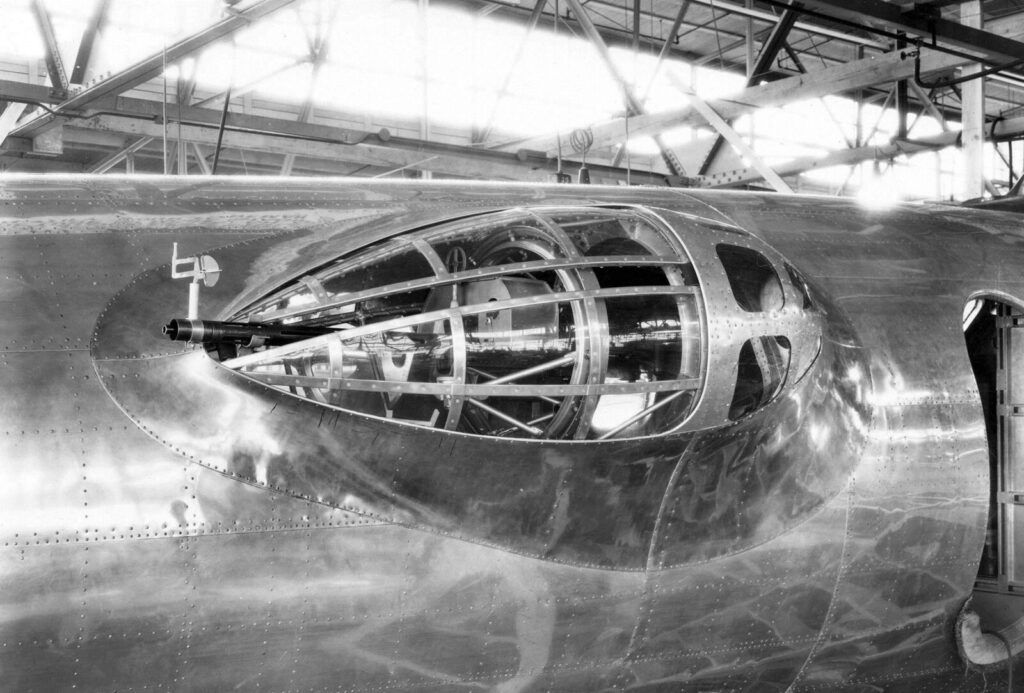
The outbreak of WWII in 1939 and the subsequent attempts to have the USA join in support of Britain and her allies Poland, Belgium and France, against Germany and the Axis countries Austria and Italy, went unheeded until Japan entered the war in spectacular fashion by attacking the US fleet and air-base in Honolulu, Hawaii, specifically “Pearl Harbour”, 07th December of 1941. It should be noted the USA had been giving assistance to Britain in the year before under “Lend Lease” an arrangement, whereby US equipment was essentially “loaned” or “leased” to the Allies at favourable terms, and many American citizens had already taken it upon themselves to travel to the UK to enlist and serve in the fight against the Nazi’s. The first B17’s arrived on Lend Lease in 1940 when 20 were transferred to the RAF and used on a raid on the German Kriegsmarine (Navy) port of Wilhelmshaven, 08th July of 1941
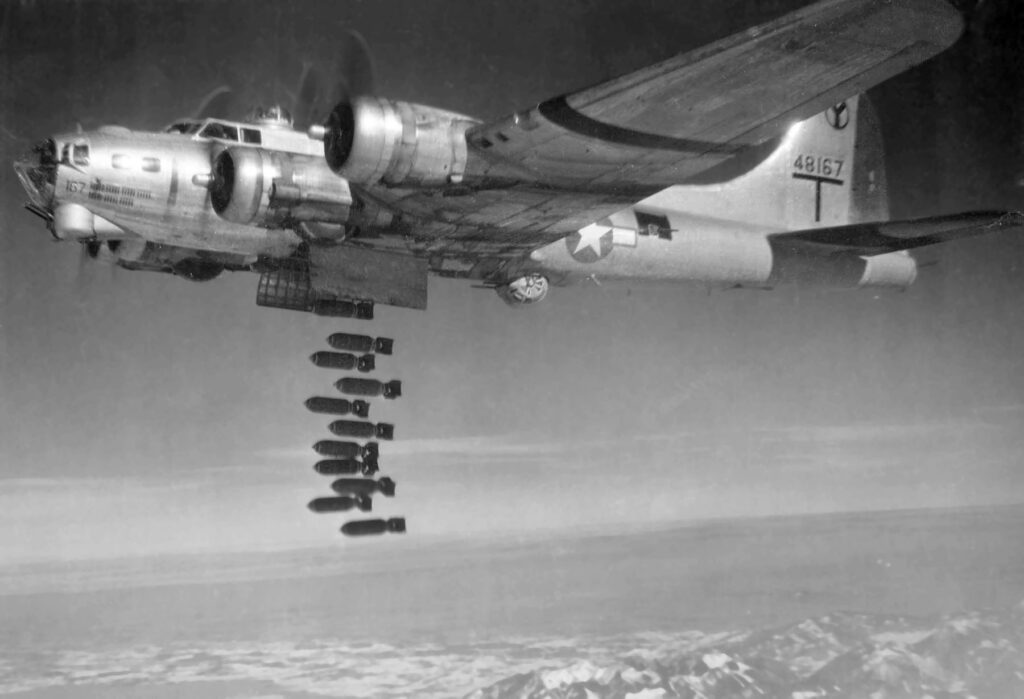
The raid did not achieve much, the B17’s were flown high and their guns froze, worse still, the bomb runs missed most of the targets and the British relegated the B17’s (which they had designated “Fortress 1”) to coastal duties. The aircraft shortfalls were fed back to Boeing and modifications were quickly made, including the most advanced aiming system using the “Norden” Mk XV bombsight, a stabilized unit that automatically adjusted the aim without the need for human calculation, which could take control of the Aircraft during the bomb run from the Bomb Aimers position in the nose of the B17’s……. although definitely not as accurate as claimed by Norden (accurate to 23m), it was certainly better than earlier bomb aiming sights averaging accuracy around 370m (On Line resource: Wikipedia “Norden bombsight”: https://en.wikipedia.org/wiki/Norden_bombsight Accessed: 06/10/22) . It would not be until 1942 that the B17 would “officially” join the war in Europe, when 12 B17-E’s of the 97th Bomb Group, flew to Rouen, France, 17th August of 1942 to bomb railway marshalling yards there

Specifications B-17G Flying Fortress
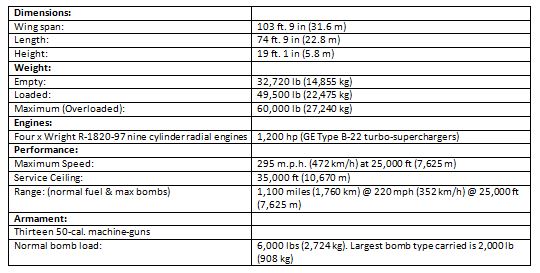
By 1943 the B17 had established itself as the pre-eminent daylight bomber of the war, the RAF keeping to night raids to reduce the loss of valuable aircraft to as few as possible. The American 8th Airforce, then commanded by Lieutenant General James Doolittle (famed for planning & leading the Doolittle B25 Raid on Tokyo, Japan April 18 1942, following the Japanese attack on Pearl Harbour), continued to prefer daytime raids, which they believed gave better chance of success aiming their bomb runs, the escort fighters could only protect the B17’s to the German coast, or a little beyond, before having to return to re-fuel and join the returning bombers over the channel, this left the B17’s vulnerable to German fighters as well as the Flak over their targets.

The loss of 60 B17’s raiding Schweinfurt’s ball bearing factories in August of 1943 and a further loss of 60 B17’s in a second raid on Schweinfurt in October of 1943 forced a re-think, (overall in October of 1943, the USAAF lost 176 bombers) and long distance raids were curtailed until longer range Mustang P51’s, fitted with additional underwing fuel tanks, could escort the bombers throughout the whole raid, reducing the casualties significantly

The B17 had been given a rather dubious reputation in the press as an almost “impregnable” battle titan, perhaps because of the legendary B17’s that had managed to struggle back across the Channel in appalling condition, and in states that defied all logic as to how they had maintained flight in such terrible circumstances. Damage from a collision with a Messerschmitt BF109 over Tunisia February 01st of 1943 had left the B17 “All American III” with its tail literally hanging on by prayers alone. Pilot Kendrick Bragg Jnr had completed his bomb run on Bizerte & Tunis and was returning to base at Biskra in Algeria when two BF109’s attacked from head on. One was downed by machine gun fire, likely a combination from the All American’s and her “wing” B17’s forward gunners
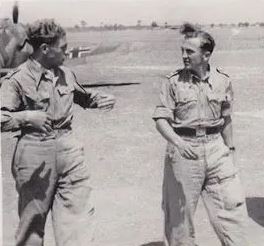
That BF109 is reported as being flown by Oberleutnant Julius Meimburg who was serving with JG 53 (but from II JG 2) and who was wounded in the attack, the second ME109 is believed to have been flown by Eric Paczia of II JG 53 (On Line resource “12 O’Clock High: II/JG 2 Tunisia 1 Feb 1943” Etgen, L. 09/01/2014 16:04. http://forum.12oclockhigh.net/archive/index.php?t-36402.html Accessed 06/10/22) where Leo Etgen states “1 February 1943: Feldwebel Erich Paczia of 6./JG 53 killed in Bf 109 G-4/Trop “Yellow 1” (W.Nr. 16 093) in aerial combat with B-17 four-engined bombers over Pont-du-Fahs….” Which includes reference to “Die Jagdfliegerverbände der Deutschen Luftwaffe 1934 – 1945”. The BF109 of Erich Paczia began attacking from the front of the All American III, it took fire during the attack and, as it broke off to roll out over the All American, Paczia, perhaps incapacitated, or dead, lost control & it’s wing struck the tail section of the B17 causing the loss of the Messerschmitt & Paczia, who was later recovered & buried in Bordj-Cedria War Cemetery, Ben Arous, Tunisia

Bombardier on the All American III, Ralph Burbridge, recalled in an interview with “The Waterland Blog” (Nichols, R. in the B Town Blog: https://b-townblog.com/2012/09/21/local-b-17-bombardier-recalls-wing-and-a-prayer-mission-on-the-all-american/ On Line Resource, Accessed 08/10/22) in 2012 “When the German pilot was about 300 yards away he began a roll to pull down and away from the All American after his attack, but about halfway through his roll either my fire or fire from the lead ship must have killed the pilot or disabled the plane. He never completed his intended roll and rapid pass under our ship, for one horrible instant he was right there – inches in front and above us. He passed over us with a distinctly audible swoosh followed by a tremendous jar and a whoomp.’”


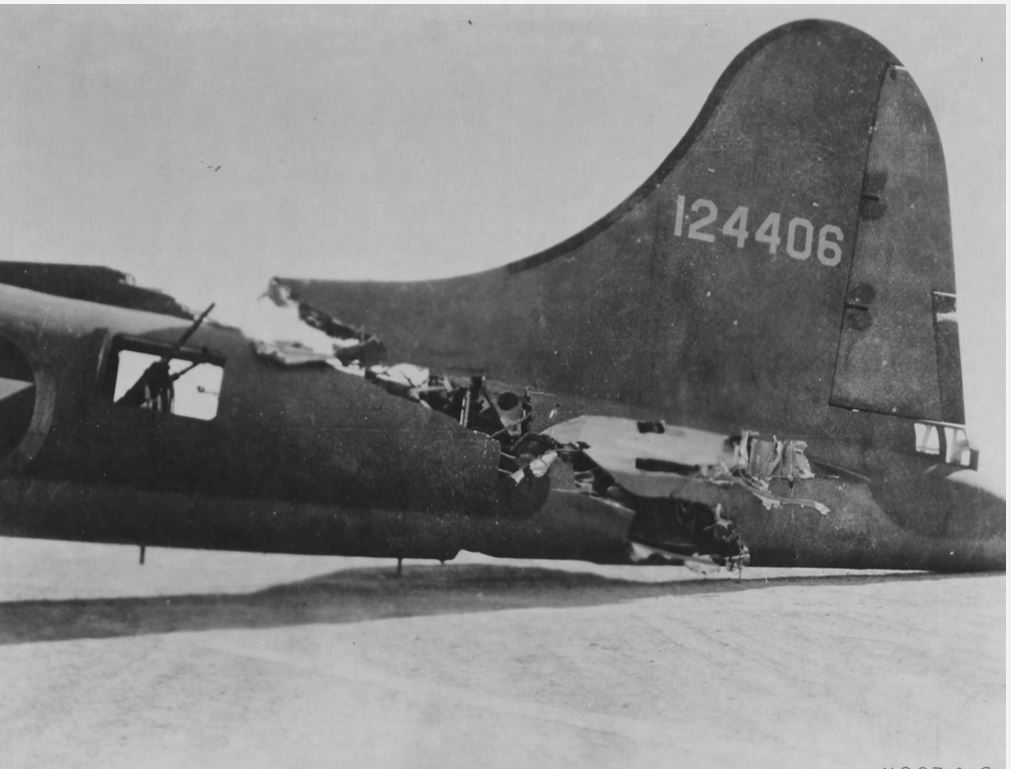
The All American III landed back at her base, the tail section holding even through the landing itself, and the All American III was not the only “miracle” that built the reputation of the B17 for taking incredible damage but managing to return home. 20th December 1943 on a raid over Bremen, Germany, in B17 “Ye Old Pub”, 2nd Lt Charles L Brown was piloting his first ever combat mission with 527th Bomb Squadron when attacked by the anti-aircraft Flak gunners surrounding the heavily defended city. The B17 was hit in the nose on its bombing run taking out its nose gun and bomb aiming position, also damaging it’s No 2 and No 4 engines, leaving it still flying, but crippled and almost defenceless as only 2 of the 11 guns remained operable, although it is not clear if that was due to crew injuries or battle damage
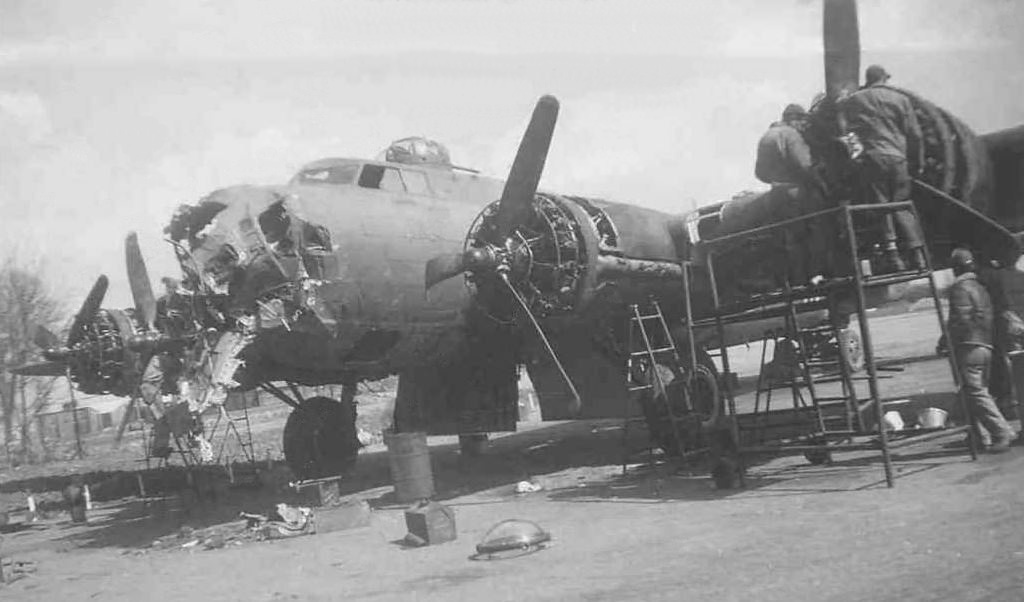
I have not found a verified photo of “Ye Old Pub” despite extensive searching, however the one above (digitally cleaned up a little, simply marked “Damaged B-17 Flying Fortress 8AF”) carries damage consistent with Charles Brown’s B17, and, where all similar I have found can be identified as “other” aircraft, I cannot discount this one as a “possible”. Charles Brown’s ill-fated B17 was trailing well behind the main group of aircraft on the return from Bremen to England, and was attacked by 15 Luftwaffe fighters, managing to fight off the attack, downing one of the attackers and damaging, if not downing a second. It would seem Ye Old Pub had finally run out of luck when Luftwaffe Pilot Franz Stigler finished re-arming and re-fuelling his BF109 and had scrambled to meet it…….
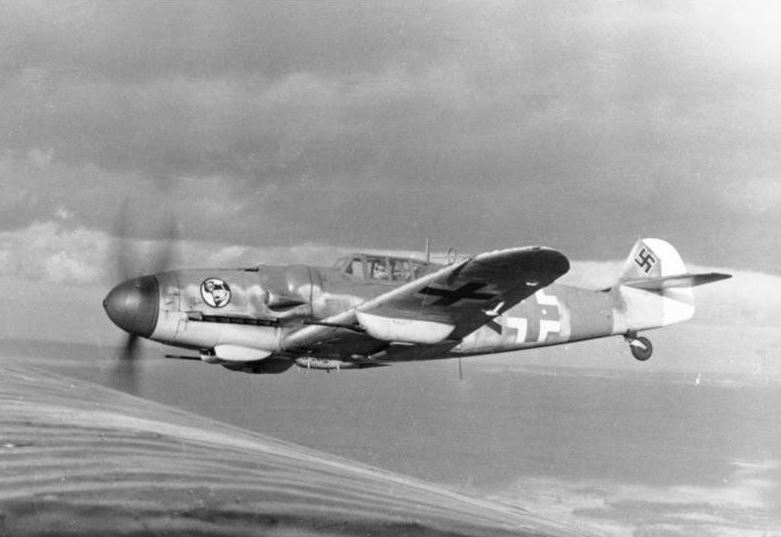
Stigler recalled after the war (Williams, J “Franz Stigler, Charlie Brown, And a Friendship Born From The Horror Of War” in https://allthatsinteresting.com/franz-stigler-charlie-brown On Line resource: Accessed 08/10/22), “When I got near it, I could see that there was much damage to the nose and tail sections. I flew in behind the plane, and I could see the gunner lying across his machine guns. There was a huge hole in the side of the fuselage, and the rudder was almost blown away. It was in very bad shape” Stigler, in an unparalleled act of mercy, at a time when it would have been simple to finish off the crippled B17, instead chose to escort the aircraft until it was over the channel and safe from further attack, he said of the incident “To me, it was just like they were in a parachute. I saw them and I couldn’t shoot them down”. Franz Stigler’s act of Chivalry, one that could easily have seen him shot as a betrayer of Nazi Germany, meant 9 of the 10 crew of Ye Old Pub (although some, including Charlie Brown, were badly wounded), would survive the raid, sadly tail gunner Hugh Eckenrode had been killed over Bremen. Both Pilots searched each other out following the end of WWII, it is a testament to the futility of war, and to the spirit of humanity, that both became good friends for what remained of their lives, Franz Stigler & Charles Brown both dying within months of each other in 2008. Those of you who, like me, love the details of such stories can find the full account in Adam Makos’ book “A Higher Call” (ISBN -10 178239253X)
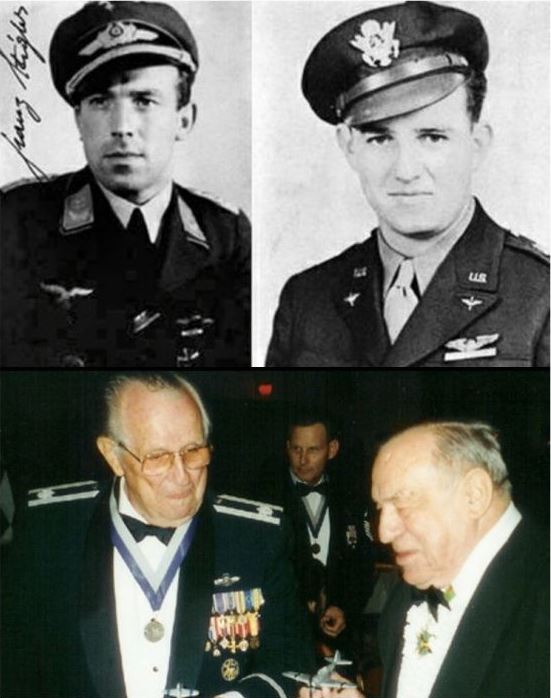
Now to our aircraft and it’s story, B17G 44-6630 was brand new when she was delivered to 340th Bomb Squadron, 97th Bomb Group, 15th Air Force, at Amendola in Italy 03 November of 1944. There was no time to name her or even paint her in unit colours when Pilot Irving G Emerson & Co-Pilot Ernest Vienneau took ownership, and her crew checked her out for the up-coming raid. Her first mission would be 3 days later, 06th November of 1944 and she was destined to bomb Vienna, the standby target would be the heavily defended railway junction at Maribor, Slovenia. Vienna had been hit hard the day before, by 500 B24’s and B17’s of the 15th Air Force, their target was the Floridsdorf Oil Refinery, it was the largest ever raid against a single target of WWII (“Mediterranean Theatre of Operations (MTO): WWII, Strategic Operations (Fifteenth Air Force” On Line resource. https://www.aircrewremembered.com/USAAFCombatOperations/Nov.44.html Accessed 10/10/2022) On the 06th November, bad weather over Vienna as they arrived would mean Irving Emerson & Ernest Vienneau would be bombing the Railyard at Maribor
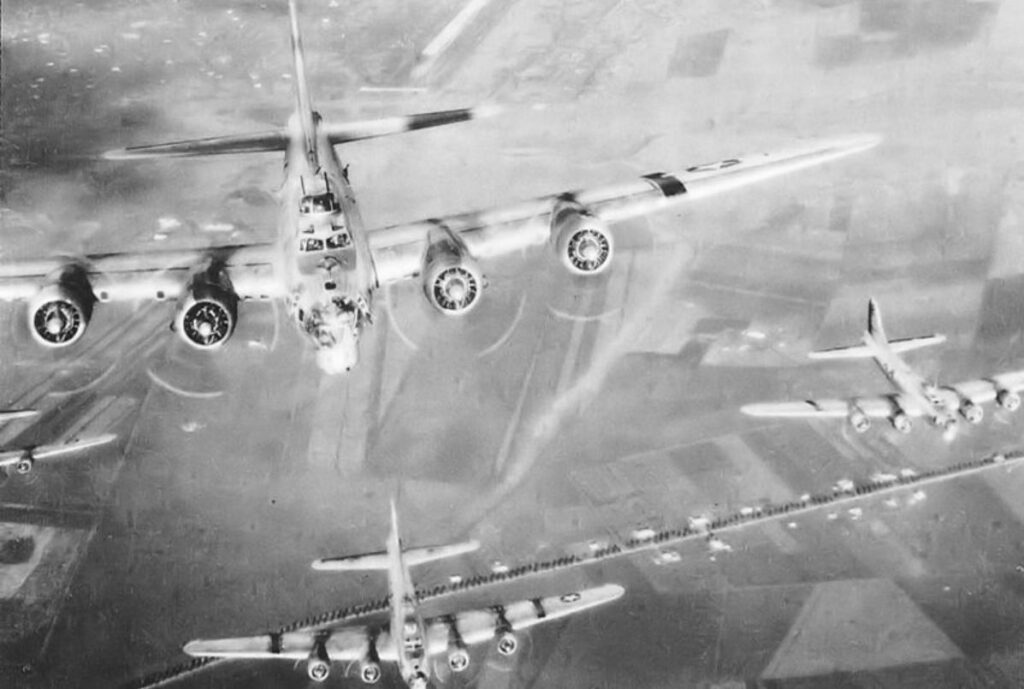
Apparently Military Intelligence believed Maribor was only lightly defended, as is often the case this turned out not to be true. Maribor had been annexed by Hitler back in 1941 and had been defended and fortified to protect its rail infrastructure and lines with many 88 and 105 anti-aircraft installations

Maribor would be targeted 22 times between January of 1944 and April of 1945 (Radovanovic, S: “Maribor Pod Toco Bomb Taborisce Smrti” Online Resource: http://www.zalozbaroman.si/maribor_pod.pdf Accessed 10/10/2022), the Drava River Rail bridges were an important target and it was known there were prisoner of war internments in the area with Allied and Russian PoW’s held captive
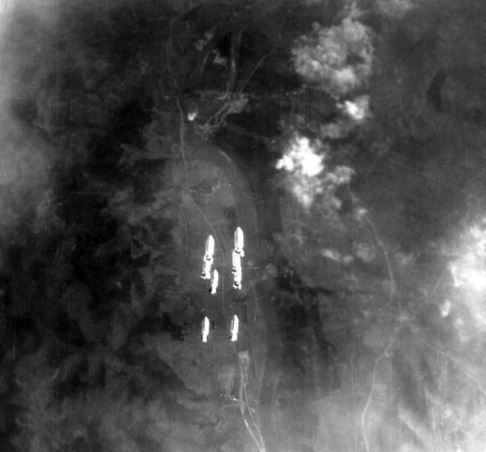
Following Hitler’s annexation of Maribor in 1941 there had been ongoing elimination programmes against the local Slovenian population, prisoners not executed directly were also held in the area, but none of this would stop Maribor from being targeted by the Allies, it was crucial to prevent Germany from having any chance of moving troops or equipment at this point in the war. The raids went well for the Allied Bomb Groups as the aftermath, with the bomb hits of 1944-1945 marked over the area of Maribor (below) show
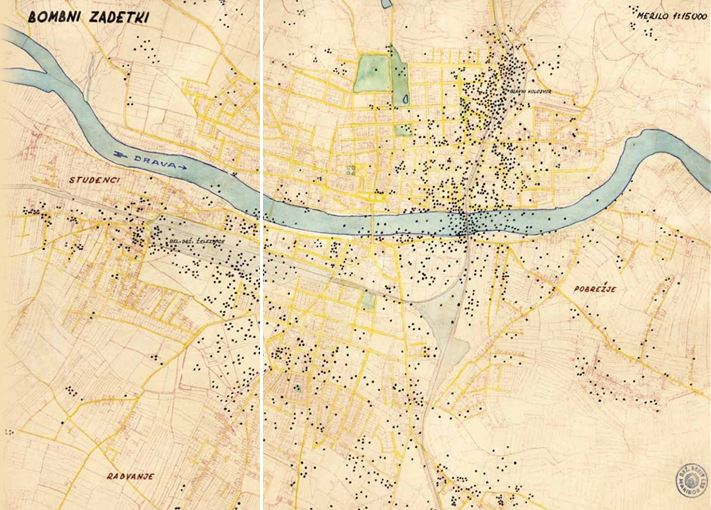
Although the B17’s had a reputation as “tough to kill”, and despite being heavily defended from almost every direction, they were still vulnerable, as the losses of Schweinfurt and the early raids had shown. Losses continued from the introduction of the B17 in 1940 with the RAF and then through the later war years with the US Airforce. You can see the effect of battle damage on the photo of a B17 looking back along the fuselage from the cockpit (below)
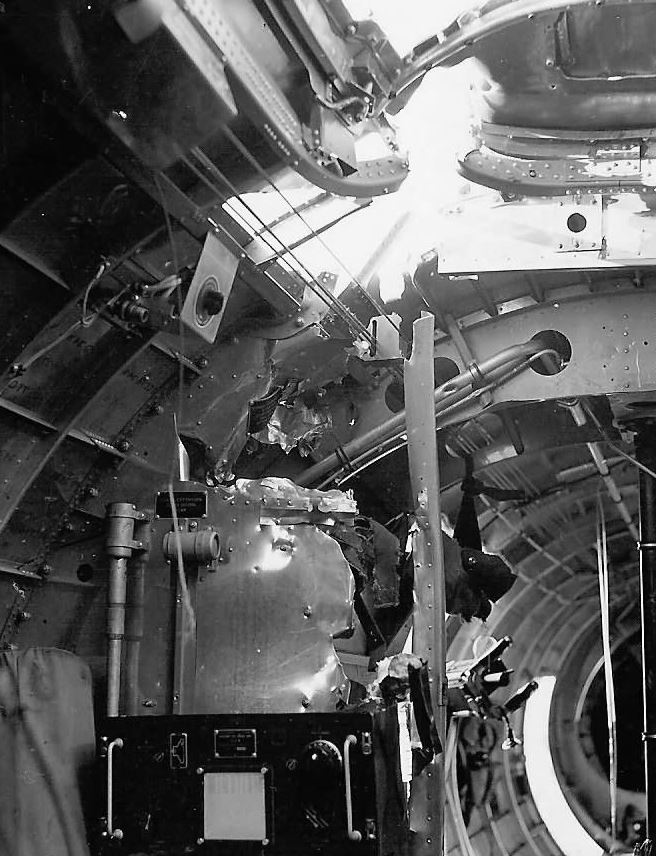
While the B17’s were state of the art aircraft for the time, they were commanded by real inputs from the pilots hands and feet via control cables, rods & linkages, it didn’t take much for a Flak explosion to sever cables as can be seen hanging from the top left of the photo, likely a rudder control cable for the tail-planes or rudder itself. It can also be seen that hydraulic pipework was vulnerable too, there is a major dent in what looks like an oil pipe (could be cable ducting) and a thinner, perhaps hydraulic pipe below has been hit too, all this from debris blown inwards from attacking enemy fire or exploding ordnance fired from the ground defence installations during an attack in September of 1944
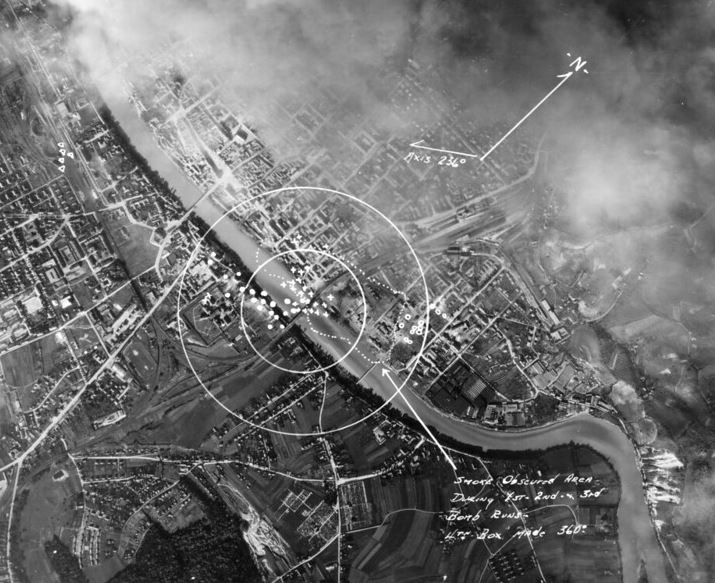
For our B17G the November 06th raid was little short of a nightmare, a Flak explosion in front of the aircraft mortally wounded Co-Pilot Ernest Vienneau, shrapnel from the blast leaving Irving Emerson in sole control. The B17’s hydraulics were damaged and one of her four Wright R1820-97’s, Engine No 3, caught fire. Emerson shut off fuel to the engine, feathered the prop and activated the Fire Extinguishing equipment on that engine which, luckily, still functioned and shut the fire down. By now Emerson had flown out of the formation and made the decision to head for the emergency airstrip at Viz, the Navigator, Bruce MacFarland, worked the heading, passed the details to Emerson and he headed the B17 out towards the Croatian coastline
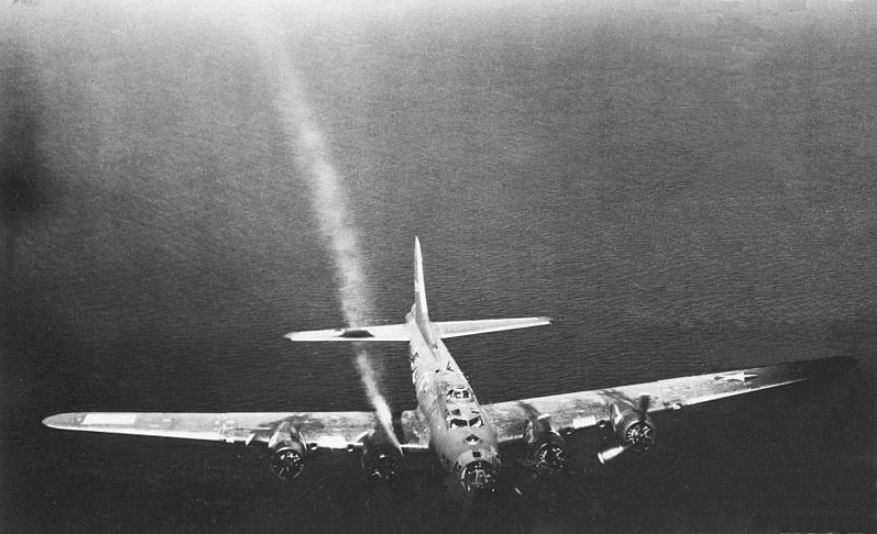
Holding the B17 in the air on three engines was no little thing, it would take Irving Emerson all his skills and no small amount of luck too to maintain the course for Viz, an emergency airfield held from the Nazi’s by partisans of Tito’s resistance fighters throughout WWII, and, by 1943, Tito’s main operational base for planning attacks on Italian and then Nazi troops and strongholds (“Tito’s Cave” sits just a mile or so from the end of the emergency airstrip to this day and is marked as a tourist attraction seeing military tours every week). Things would get worse for Emerson and his crew during the odyssey, everything that could be jettisoned was, to lighten the aircraft and reduce the fuel needed to get as far as Viz, at some point in the flight they lost a second engine leaving them flying on two
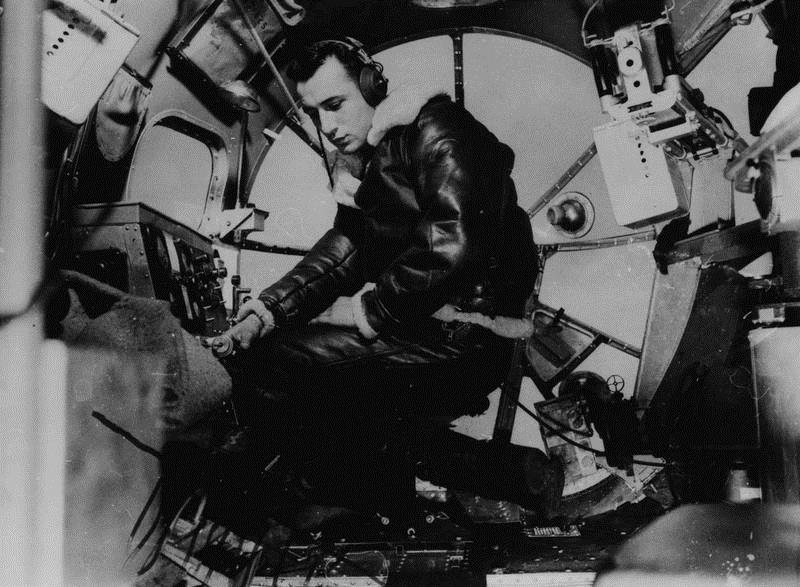
Approaching the airfield Emerson circled to assess the best option to land, his hydraulics had been hit and only one wheel would deploy despite the efforts of his crew to lower the second, as Emerson was making his approach another engine died and it became clear the B17 wasn’t going to make the airfield. At this point, apparently unknown to Emerson, there were issues on the ground, the airfield had sent up a Red flare to warn the B17 off (stories have it they did not want a wreck on the runway as there were several other expected landings), unaware, and with the third engine now dead, and worse yet, rapidly running out of fuel, Emerson turned the stricken B17 parallel to the shore and ditched perfectly into the Adriatic, his B17 miraculously in one piece and his crew safe (Emerson, I.G. “Interview with Irving G. Emerson” Veterans History Project. Online Resource: Accessed 11/10/2022)

Local fishermen had seen the aircraft as it circled the emergency landing strip, several had taken their boats out when it was clear the B17 was unlikely to make it, Emerson and the other 9 of his crew were rescued and taken to shore safely, only Ernest Vienneau, his body having been moved to the bomb aimers position in the aircraft for the flight to Viz, would remain on the B17 as she took on water and sank
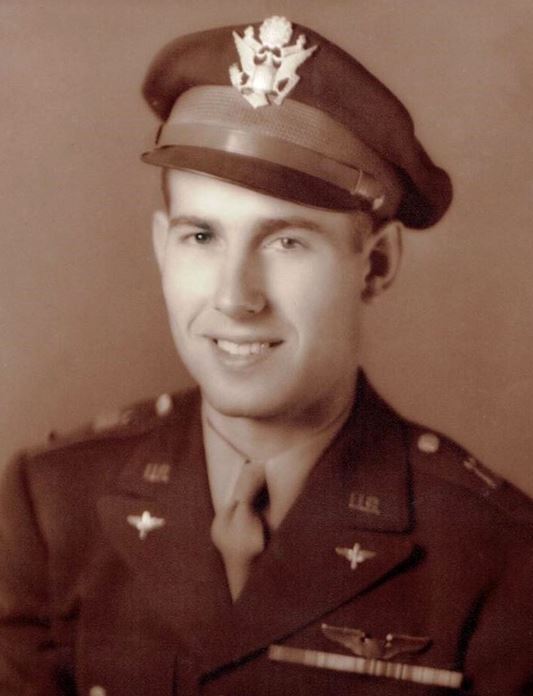
Ernest Vienneau had been hit in the head by shrapnel and was seriously injured, by the time the B17 reached Viz Irving Emerson believes he was dead, although Merrle Sieling, Starboard Gunner on the aircraft is quoted in one account as having said “When I jumped into the sea, the nose of the aircraft was sinking. I heard the copilot moaning in the cabin, so I hurried back. But I was too late, the aircraft had sank. My clock had stopped, showing 13:30” (“History and War B-17G Wreck Near Viz” https://historyandwar.org/2022/07/31/b-17g-wreck-near-vis/ Online Resource: Accessed 11/10/2022)
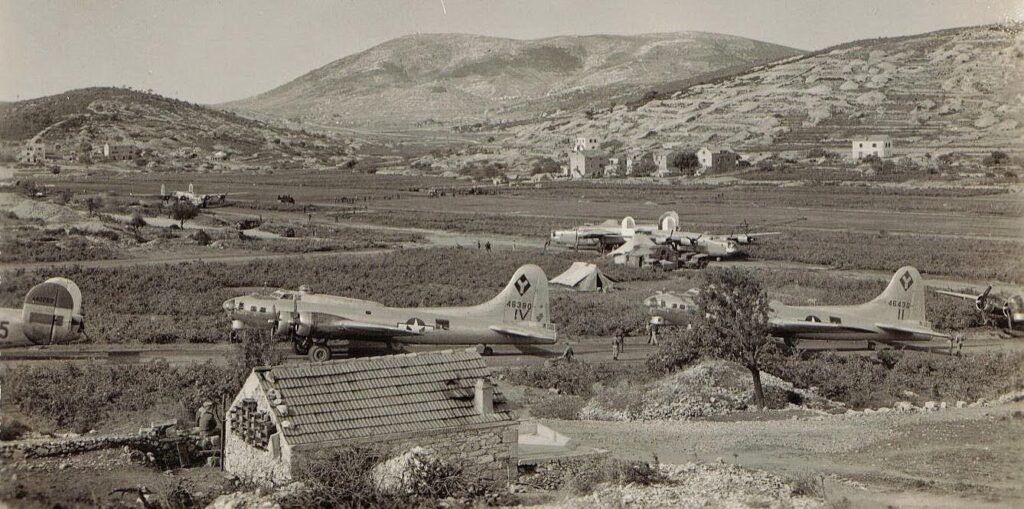
Hearing there was a B17 in such condition and off a country I was already familiar with, and had managed to convince Ellie (my wife) to visit, gave me an opportunity to explore her tolerance with my obsession with diving. I suggested an “island holiday” a little off the beaten track, where there were still far fewer tourists to contend with, in a country she had visited, which was only a couple of hours flight time away….it didn’t take long for Ellie to start looking at the island of Viz and possible hotels (thin on the ground) and….more interestingly, something called “Air BnB’s” whatever that might be….Ellie has always been the more adventurous of the two of us when it comes to holidays! It wasn’t long until we had a holiday suite booked on the other side of Viz Island in Komiza, a small fishing village more recently used as a holiday destination for Croatians, and the odd German or Italian adventurer, and more often, the yacht fleet-hire aficionados! As I mentioned earlier, we had visited Pula back in October of 2015 (see the “Best Ever Dives” section of this blog) to dive the Baron Gautsch, I had sold that holiday to Ellen based on my memory that late season was pretty warm in Croatia until November set in, it hadn’t been as warm as expected to be honest and a little rain had dampened Ellie’s enthusiasm for so late a trip, but as I had taken her to Mexico in February and the Red Sea in August, she had been sanguine about it, although in planning Viz, Ellie was determined it would be no later than September that we went this time
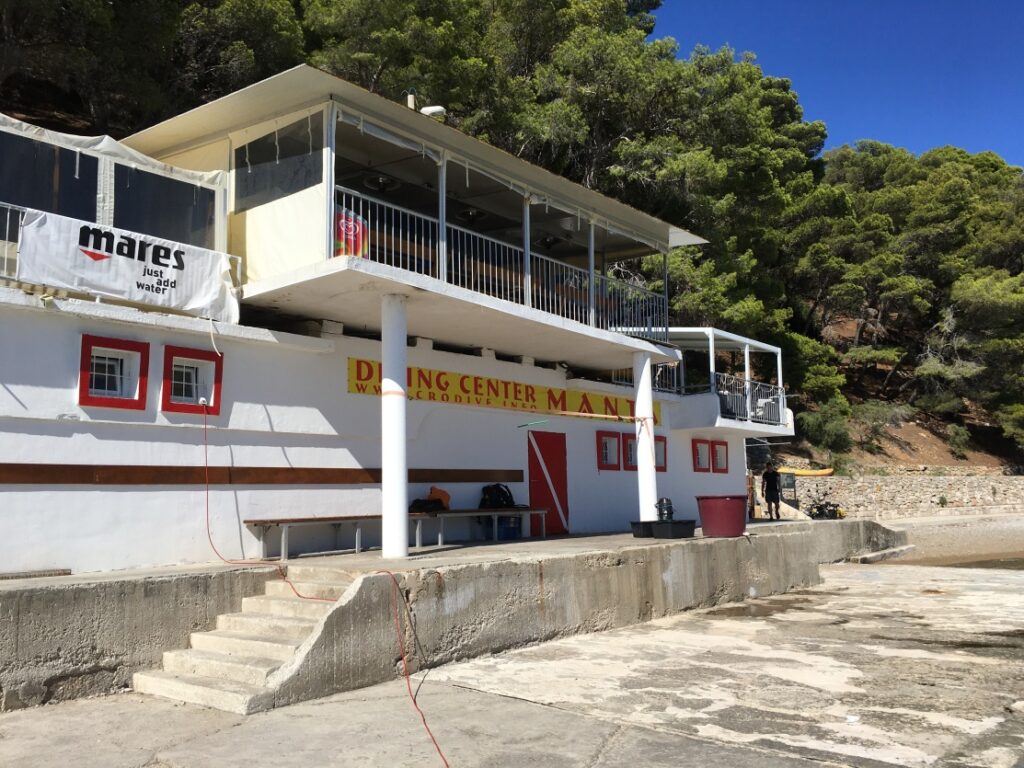
It would turn out to be an abortive attempt to dive the B17 in September of 2016, despite having spent time looking at three dive centres in Komiza, the first two discounted by a process of elimination, they were not as kitted up as I’d like for a dive of 70 plus metres, neither having twin manifolded cylinder sets for hire, nor on-site Tri-Mix facilities, but the third, Manta Dive Centre, at the extreme of the bay, that was a different matter entirely. Fully kitted for technical diving, rebreather s catered for, everything now aligned nicely and Andi & Aniska, the brother & sister owners of the dive centre were both helpful and professional from the off, with information about pre-lim dives to build up to the B17 and slots I could fit into, first being the Vassilios T, formerly the Eastern Temple, a wreck lying from 20m down to 50m, ideal to settle in to the area and a new wreck to explore….perfect…..or it should have been had a tooth not practically (it seemed at the time) imploded at around 28m whilst finning down the wreck’s Starboard side…….Thus ended the 2016 expedition, and all diving until I could get a replacement filling completed back in the UK
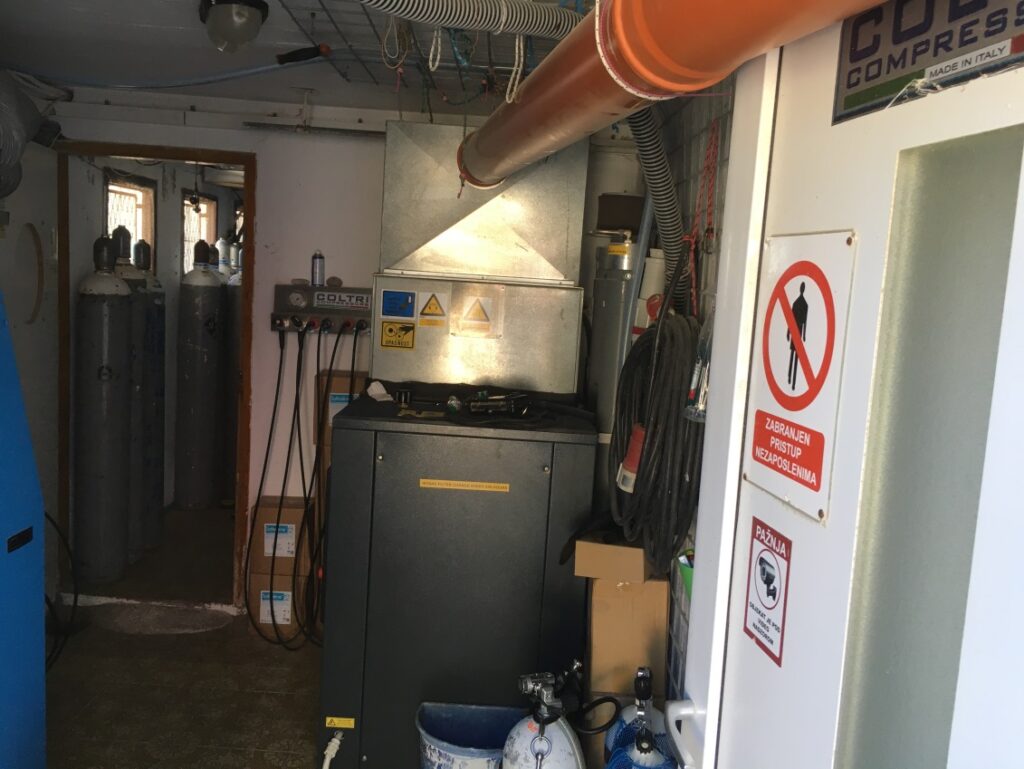
The abortive dive of 2016 did not lessen my desire to dive the B17, but it would be another three years wait before I could return to Viz, in July of 2019! I had arranged with Andi Marovic to have a twinset and sidemount available at Manta diving, I book in advance as Andi has a busy schedule with divers from Germany, Italy and, more recently, from the USA coming across to dive…… As in 2016 I started with Vassilios T and moved from her on to Theti, another local wreck to Manta, both wrecks built up nicely to follow on to the B17 on a light Tri-Mix of 16/45 with 50% as deco, my new Blue Log takes up the narrative: “16/07/2019 B17 G KOMIZA CROATIA B17G Flying Fortress (Boeing) which narrowly survived a raid over Nazi occupied Europe, losing one crew member to flak & being flown on 3 engines trying to land on Viz which was a partisan stronghold & emergency landing strip – Flagged off on landing its last engine died & it was ditched on final approach which was the saving of all other crew – a superb piece of flying in the circumstances! A deep dive, my first Tri-Mix for 15 years plus – apprehension was high but the dive went perfectly, a great descent to the cockpit, a fly down the hull Port to Starbord round the tail then across both wings & up to deco! Bloody Marvellous dive! Buddies Andi & Franco, Air In 230 Out 100”
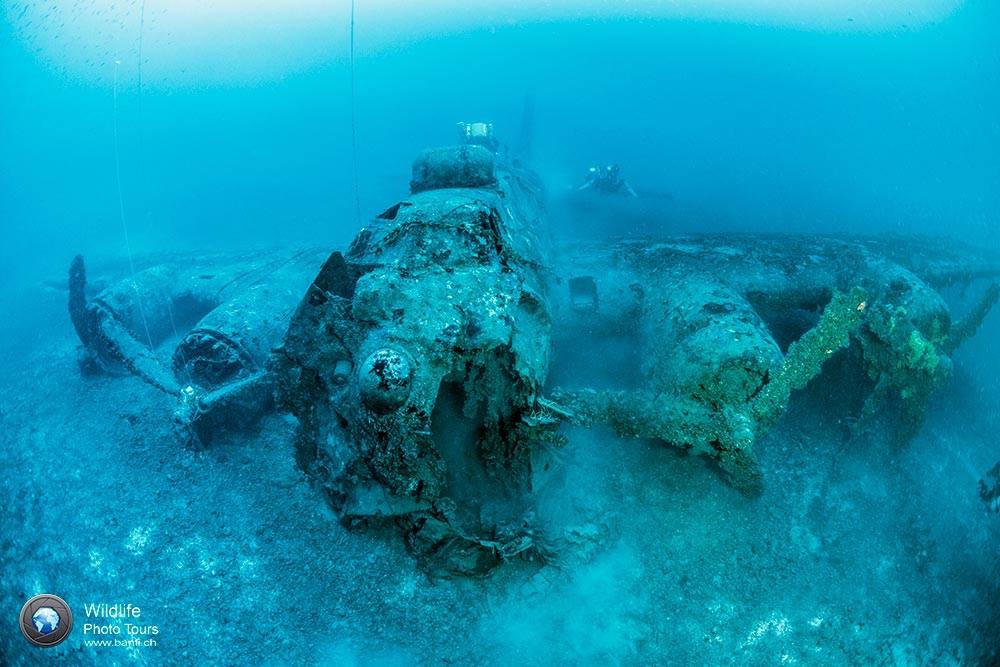
It shows that the dive was a stunner, the usual descriptive has definitely ramped up even for someone who tries to remain objective rather than effusive! I took the time to include the story as I often do on a first dive (and sometimes forget I have done on subsequent dives to a wreck), but I was also keen not to lose sight of the drama of the B17 wreck, however briefly. I also mention my apprehension at a deep tri-mix dive after 15 years or so without using the gas, there’s a lesson there, I am happy to be apprehensive, it keeps my preparation & execution focussed. Tri-Mix is a serious gas, misuse can (and will) seriously ruin your dive and your day, and if you are not careful a bunch of days afterwards…….
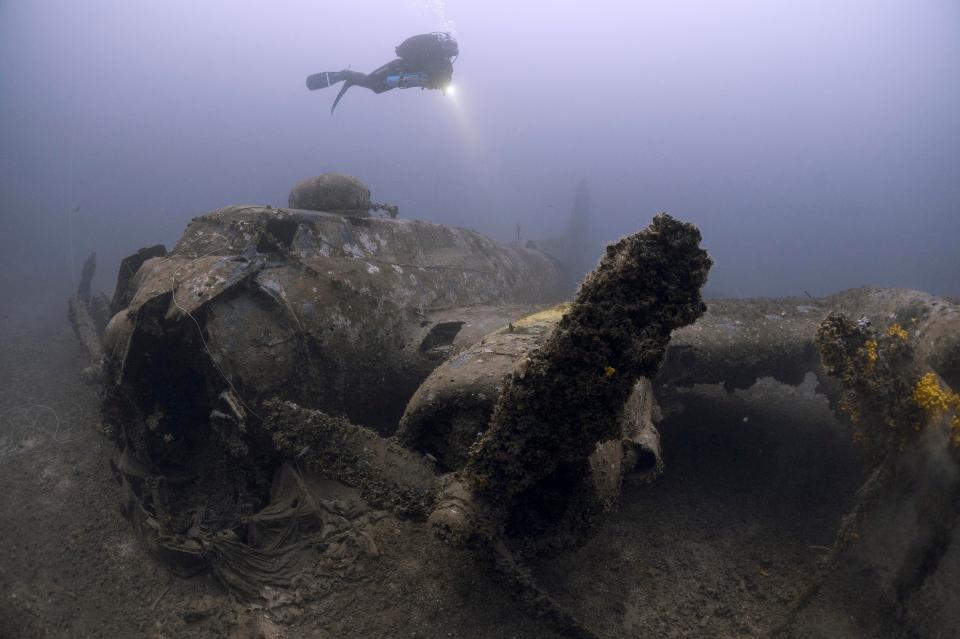
Suffice to say, I do not get enough opportunity to deep dive these days, and so build-up and preparation I take very seriously, every time. It doesn’t help that Andi considers me a dinosaur for using open circuit tri-mix, all his other tri-mix divers are on rebreathers. You will pick up why I am not still on a rebreather elsewhere in this blog if you look, nothing sinister, just my perspective….and I will remain a dinosaur until my last breath….which won’t be on a rebreather, I assure you Andi!
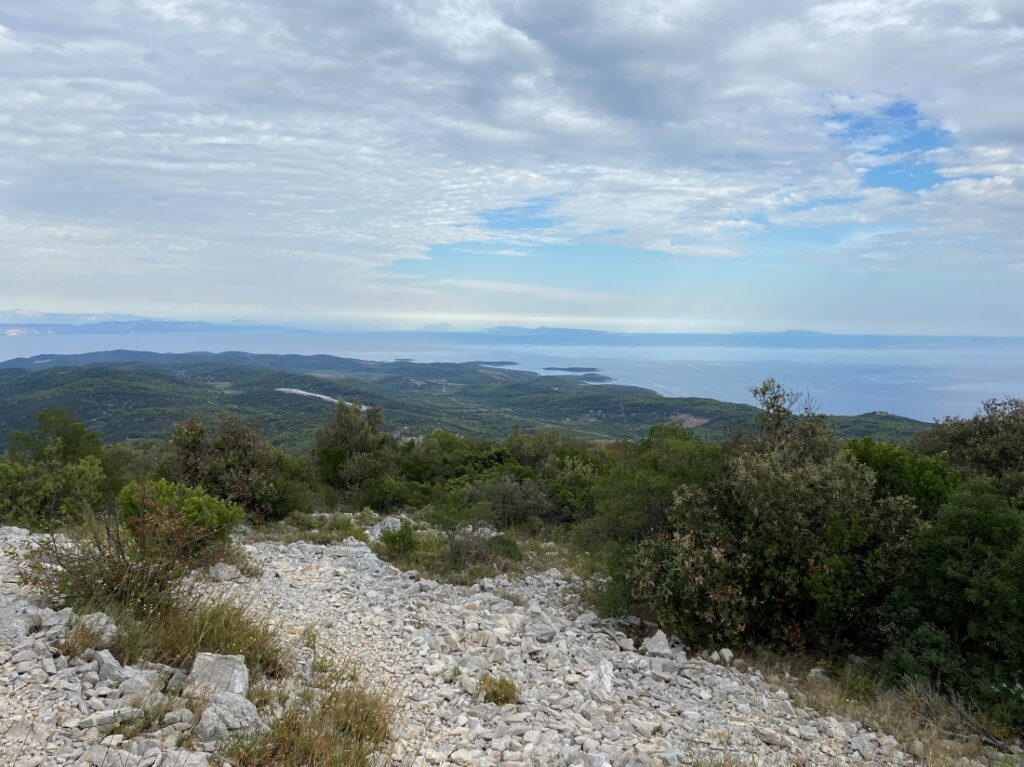
The preservation of the B17 is remarkable after 70 plus years underwater, there are 3 dive centres locally that dive her, all are aware she is an important draw for their businesses so all will hopefully continue to ensure Irving Emerson’s amazing achievement saving his crew and, almost, his aircraft, after defying such desperate circumstances, remains in the condition she is in today. I returned to dive her this year (2022) in August, the Blue Book records the dive: “30/08/22 B17 MANTA/KOMIZA Return to the B17 which was long overdue! A drop down the shot & gas switch @ 18m from 50% to 17/46 then on down to the Aircraft sat in a haze with her tail & rudder just visible from the cockpit & wings. This time just a photo scan of the wings & engines then a run front to tail on her Starbord side to take a look in the mid-gunners position then to the tail & a run back up her fuselage to peak in the hull half way up – on up to deco for 25 mins Superb dive! Air in 200 Out 140”

I hope I can continue to return to dive to her silent resting place in the Adriatic, where B17G 44-6630 sits in the Blue, a monument to the heroism of those who flew, despite knowing the odds of return were stacked heavily against them, many of them never to return…….In total, the 8th Air Force received 6,500 B-17G’s, by the end of the war a total 1,301 B-17G’s had been shot down or reported missing in action

This Piece is dedicated to the memory of those crews mentioned in its lines, and to all of those unmentioned who gave their lives partly or completely to fight for the freedoms we take for granted…..All gave some…..Some gave All!
At the going down of the Sun….And In the Morning……
B17 Crews
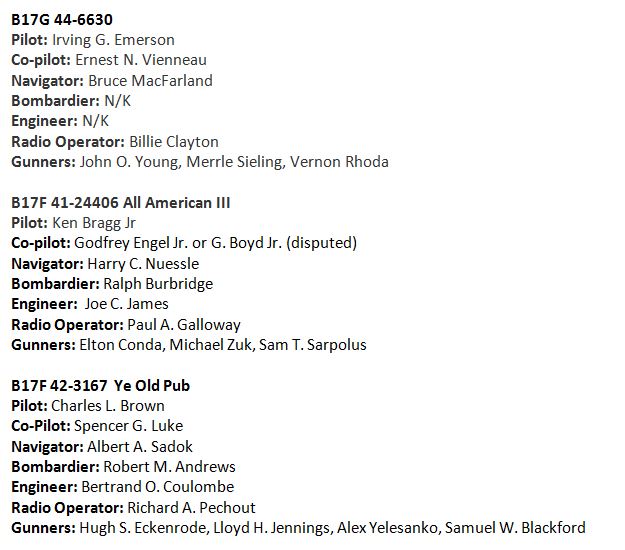
Franz Stigler & Charlie Brown’s own account of Ye-Old Pubs Mission from their first meeting in 2012
Irving Emerson’s own account of the 44-6630 mission: Veteran’s History Project recording from 2011
http://memory.loc.gov/diglib/vhp/story/loc.natlib.afc2001001.20754/mv0001001.stream
As ever I am indebted to those whose excellent photographs have made this piece what it is, Franco Banfi, Martin Strmiska, Saso Radovanovic and, although I can’t positively confirm it I believe Steve Jones photo appears too
Why Not Join Me Diving B17G 44-6630
